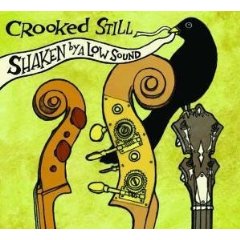REFERENCE 3A GRAND VEENA LOUDSPEAKERS
| REFERENCE 3A GRAND VEENA LOUDSPEAKERS |
| Tutti Magnificent |
|
|
|
February 2009 |

On a brisk evening in December, a crowd descended upon the venerable Jordan Hall at the New England Conservatory of Music (“NEC”) here in Boston to celebrate composer Elliott Carter’s 100th birthday. Carter sat in the audience, in a sports coat and plaid shirt, basking in the limelight of entering his second Century while chatting with students and signing their copies of his musical scores. In a recent interview on NPR, Carter stated that he still remembers New York City without “motorcars,” remembers the Hudson flooded with British warships during WW1 and recalls upon attending the 1924 premier of Igor Stravinsky’s “Rite of Spring” that he wanted to be a composer from that moment on. At his NEC birthday celebration, student ensembles performed selections from Carter’s earlier works as well as a world premiere of his newest piece, “Tintinnabulation,” a work commissioned for the NEC percussion ensemble. Performances of Carter’s earlier “tonal” works included the uplifting “Elegy” (revised for string quartet in 1946) and Carter’s “Woodwind Quintet” (1948). Each piece wove a web of intrigue between different instrumental voices. In the case of “Elegy,” this short piece took on a slow moving portrait of solemnity and beauty, while in the “Woodwind Quintet,” a scampering dialogue occurred between flute, oboe, clarinet, bassoon and French horn that careened into a jazzy feel. Carter described his world premier of “Tintinnabulation” as divided into three sections: wood, metal and skin, scored for six percussionists. This intense frolic sounded like a complex dialogue where all parties are intent upon having their say (with different mallets in hand). Carter’s newest music combined fresh individual energy and swirling motion with lingering pauses, as individual percussive instruments collided and joined together in unpredictable ways. In his NPR interview, Carter offered one perspective on his musical vision in discussing his First String Quartet that he composed in 1950: “The idea was that the total effect would be something that would make a unified piece. Even though all the individuals are being individual.” Carter’s seeking of a “unified” statement (amongst all the individual instrument voices, shifting speeds and unpredictable dynamics of his compositions) also brings to mind the virtues of the Reference 3A Grand Veena loudspeaker system under review here. The Grand Veena might well be described in ways quite similar to hearing Carter’s music for the very first time, fresh and startling, just as it was performed at his NEC 100th birthday concert celebration.
Allegro
The Grand Veena is clearly a statement loudspeaker, (priced at $8,000), from a company that has been researching and developing loudspeakers for almost half a century. It packs so many technical features into its compact enclosures that I can only hint at them here, deferring to Divergent Audio and Reference 3A’s amicable President, Tash Goka, to supply further details. The heart of the Grand Veena (rated by Reference 3A at 90 dB with an impedance of 5 Ohms) is its 7-inch main driver. This driver is technically a “full range” driver, because it is constructed without any crossovers to limit its bandwidth, and is coupled directly to your amplifier. Its woven carbon driver is flare-shaped, “designed to eliminate resonances from cone break up.” This main driver sits below a silk dome tweeter built around a low mass voice coil and copper Faraday-Ring, all in a “non-resonant back chamber.” With a resonance of 590Hz, the tweeter uses a “high-pass first order filter to keep the lower frequencies out.” Above this tweeter sits a super-tweeter unit made by the Japanese company, Murata, composed of a 12 mm. ceramic dome unit radiating in a unique spherical motion. The super-tweeter operates from 20kHz to 100Hz, thus reaching beyond the realm of human hearing. Goka explains that the super-tweeter is employed to promote better perception of lower frequency information and “spaciousness of the soundscape.” Located below the Grand Veena’s main driver are two 8-inch bass drivers. These are composed of Fiberglass and Kelvar in a honeycomb construction housed in a folded port tuned to 36Hz, with a low pass filter to bridge to the main driver. The Grand Veena also incorporates several other technical refinements including two purifiers from Jack Bybee (to attack audio circuitry noise) and the application of AVM vibration control fluid to further reduce resonances.
The Grand Veena arrived in beautifully crafted light satin wood. Its slim enclosure and small footprint is wonderfully compact. Its front baffle is tilted back at a critical angle, part of Reference 3A’s research into time alignment principles. (The founder of Reference 3A, David Dehay of France, was the first to come up with time alignment as a design principle). The speaker’s angle can be adjusted by spikes underneath, resulting in some startling improvements to image dimensionality and expansion of soundstage on very slight adjustments. The Grand Veena was first auditioned in my large listening space, placed with excellent results in the same location as my Hanson Prince V.2 loudspeakers, with tinkering done to incremental distance and height adjustments. I spent the majority of the audition, however, in the confines of my relatively small office space, (10’x17’) with a near field listening position of seven feet. I auditioned the Grand Veena through a variety of tube and solid state gear. This exercise highlighted how the Grand Veena is a reviewer’s Holy Grail, in that it reveals (quite unflinchingly), the qualities (pro and con) of associated electronics and cabling. For example, the Grand Veena ruthlessly exposed my Audiomat Arpege Reference tube integrated amplifier as being lovely to listen to, but lacking in the delivery of complete musical information and subtle dynamic shadings. Better was the Simaudio Moon Evolution i-7 integrated amplifier ($6,000), on loan from the guys at Goodwin’s High End Audio. The Grand Veena complimented the i-7 nicely, with the i-7’s superb transient speed, marvelous resolution, and its touch of warmth that took me completely by surprise for a solid state design from Simaudio. Finally, with the Burmester 051 integrated amplifier in place, the Grand Veena met its best partner. The 051 ($9495) is a gleaming, hand built solid state integrated amplifier, (rated at 150 wpc), part of Burmester’s entry level “Rondo” line of products. The Grand Veena revealed the 051 to be a superb conductor of the natural momentum and flow of music. The 051 was positively bewitching in its dynamic freedom and has an uncanny ability to get to the heart of the music. (Review of the 051 is forthcoming!)
Scherzo
With the right dance partners, the Grand Veena provided a very special opportunity to explore not only individual instrumental voices and textures in music, but also offered that elusive reproduction of a UNIFIED musical statement presented in our favorite recordings.  A reference to hearing Elliott Carter’s music for the first time again comes to mind. Listening through the Grand Veena to Carter’s ASKO Concerto (composed in 2000), in a wonderfully recorded live performance by Oliver Knussen conducting the Asko Ensemble [Bridge 9184], the piece begins with a huge collision of instrumental voices, blasting tuba, whirling woodwinds and fleeting strings. The Grand Veena captured all of Carter’s cacophonous frenzy in his instrumental voices, as well as their textures and chaotic start and stop rhythms, with shocking realism and transparency. Each instrument’s texture was revealed with great accuracy and dynamic scaling. Tuba burst forth out of the speakers, with all of the bite and metallic surprise that its blasts could conjure. These tuba blasts sent waves of impactful bass and accompanying air to my listening position, without any port artifacts or sense of constriction. The comic solo bassoon also leapt from the speakers, perfectly positioned within the spatial layers of the Ensemble performing on stage (image placement was excellent), with no discernable timbre distortion or midrange glare. Plucks of violin, quick snare drum rolls and the glisten and decay of harp strings all were convincingly real, surrounded by pockets of natural air and delineated in a spacious soundstage.
A reference to hearing Elliott Carter’s music for the first time again comes to mind. Listening through the Grand Veena to Carter’s ASKO Concerto (composed in 2000), in a wonderfully recorded live performance by Oliver Knussen conducting the Asko Ensemble [Bridge 9184], the piece begins with a huge collision of instrumental voices, blasting tuba, whirling woodwinds and fleeting strings. The Grand Veena captured all of Carter’s cacophonous frenzy in his instrumental voices, as well as their textures and chaotic start and stop rhythms, with shocking realism and transparency. Each instrument’s texture was revealed with great accuracy and dynamic scaling. Tuba burst forth out of the speakers, with all of the bite and metallic surprise that its blasts could conjure. These tuba blasts sent waves of impactful bass and accompanying air to my listening position, without any port artifacts or sense of constriction. The comic solo bassoon also leapt from the speakers, perfectly positioned within the spatial layers of the Ensemble performing on stage (image placement was excellent), with no discernable timbre distortion or midrange glare. Plucks of violin, quick snare drum rolls and the glisten and decay of harp strings all were convincingly real, surrounded by pockets of natural air and delineated in a spacious soundstage.
Also special was the fact that one could readily explore the nuances of Carter’s dynamic shadings in this piece, as the quietest whisper of flute flew next to the forte blare of trombones. That flute flew high and unrestricted, reaching skyward without any compression, glare or an unnatural, warm veil. Some might find the Grand Veena’s treble less lush than one hears in real life. I felt that the pure, airy freedom of the Grand Veena’s grainless treble trumped any slight loss of harmonic richness or lushness in this region. [Midway through my audition, Tash Goka of Reference 3A forwarded to me a set of brass screws to replace the original steel screws on the Grand Veena’s driver frames. Substituting softer brass screws revealed further improvements to its treble regions, with a discernable improvement in high treble smoothness and spaciousness. Goka informed me that brass screws are now standard on all Grand Veena production units because of how the softer brass creates less noise in combination with the Grand Veena’s magnesium alloy driver frames.] Listening to violins play on Carter’s ASKO Concerto, the Grand Veena exposed the violin’s rhythmic timing and the nuanced details of the string players’ techniques that included how they bowed into, or against, Carter’s swiftly changing rhythms. The Grand Veena gave less attention to the character of the instrument itself, with less warmth and sense of its wooden body. (Although given this loudspeaker’s very revealing character, choice of partnering electronics might alter this equation). Nothing in these massed or individual strings sounded mechanical or analytical; they all sounded vibrantly alive, smooth and spacious.
The Grand Veena’s special way in conveying individual instrumental voices was made even more impressive by the Grand Veena’s ability to reproduce Carter’s complex music in all of its natural flow and momentum, revealing it as a unified, coherent Whole. This is the same quality that makes the Hanson Prince V.2 so special. With the Prince V.2 you get the whole visceral musical picture, top to bottom, dynamically coherent even on the most complex and richly drawn musical palettes. The Grand Veena has these same special qualities: vivid transparency, timbre accuracy and aliveness, with an overarching integration of all musical elements (top to bottom), albeit within a more scaled down soundstage and octave reach than the Prince V.2.
 Moving from classical to Big Band Jazz, the Grand Veena brought its startling and fresh presentation to the complex canvases of the Bill Holman Band as well as to one of my favorite new guys on the block, Rick Wald and his big band, 16/NYC, on their latest recording, Play That Thing [Glowblow 002]. Wald, like Elliott Carter, loves playing with shifting rhythms and with individual instrumental voices to create a collage of colors and harmonic surprises. He also takes great care in his recordings by recording 16/NYC in live performance with no over-dubs. On the title cut of Wald’s latest, the Grand Veena threw a spacious soundstage (even in my small listening space), with excellent definition between the sizes and shapes of all the instruments on stage. Ted Kooshian’s piano leapt off the page to start the tune, with bopping clarity and focus. This led to a rapid fire of trombone colors, shockingly quick, metallic and deep. Even with Lou Marini’s alto sax trilling and spilling wildly over a frenzy of free-flung bursts from the entire 16/NYC Band, the Grand Veena maintained perfect focus, delineating all of the individual musical voices and elements of this fast paced feast for the ears.
Moving from classical to Big Band Jazz, the Grand Veena brought its startling and fresh presentation to the complex canvases of the Bill Holman Band as well as to one of my favorite new guys on the block, Rick Wald and his big band, 16/NYC, on their latest recording, Play That Thing [Glowblow 002]. Wald, like Elliott Carter, loves playing with shifting rhythms and with individual instrumental voices to create a collage of colors and harmonic surprises. He also takes great care in his recordings by recording 16/NYC in live performance with no over-dubs. On the title cut of Wald’s latest, the Grand Veena threw a spacious soundstage (even in my small listening space), with excellent definition between the sizes and shapes of all the instruments on stage. Ted Kooshian’s piano leapt off the page to start the tune, with bopping clarity and focus. This led to a rapid fire of trombone colors, shockingly quick, metallic and deep. Even with Lou Marini’s alto sax trilling and spilling wildly over a frenzy of free-flung bursts from the entire 16/NYC Band, the Grand Veena maintained perfect focus, delineating all of the individual musical voices and elements of this fast paced feast for the ears.
And speaking of feasts, vocals were served up with such a startling vividness on the Grand Veena that it was hard to figure out what, if anything, the speaker was contributing as a sonic signature. From the deep husk of Jeffrey Foucault on his superb recording, Ghost Repeater [Signature Sounds] (with the hallowing guitars of Bo Ramsey lingering and shadowing him everywhere) to the fragile delicacy of Nick Drake on his classicPink Moon [Hannibal Records], each performance was rendered with a dynamic freedom and a capturing of each vocalist’s style that was riveting. The Grand Veena did emphasize more the intricacy of Drake’s acoustic strumming technique (including all of his hits, misses and string buzz on the cut, “Know”) than conveying the full warmth and woody richness of the instrument itself. Drake’s voice was as true and clear as a bell, with every lyric, breath and turn of phrase perfectly defined and rendered in its natural flow.  Once again, the Grand Veena pulled off that magic of getting the whole musical statement just right. Another feast for the ears was listening to the great acoustic string band, Crooked Still, and their kite- flying delicate singer, Aoife O’Donovan. On “New Railroad”, taken from Crooked Still’s eclectic recording, Shaken By A Low Sound [Signature Sounds], O’Donovan sings high and sweet, first buffeted by banjo and then joined by flat-picked cello and double bass. The Grand Veena held O’Donovan in its perfect airy grip, crystalline and light, with not a hint of glare or reticence, overtones climbing higher and higher. Below her, the twinkling of banjo and the quicksilver slap of cello were pungent, with no midrange emphasis or boom. This sweet ditty flowed with a natural momentum, as delicate and poignant at low volume as it was at higher volume.
Once again, the Grand Veena pulled off that magic of getting the whole musical statement just right. Another feast for the ears was listening to the great acoustic string band, Crooked Still, and their kite- flying delicate singer, Aoife O’Donovan. On “New Railroad”, taken from Crooked Still’s eclectic recording, Shaken By A Low Sound [Signature Sounds], O’Donovan sings high and sweet, first buffeted by banjo and then joined by flat-picked cello and double bass. The Grand Veena held O’Donovan in its perfect airy grip, crystalline and light, with not a hint of glare or reticence, overtones climbing higher and higher. Below her, the twinkling of banjo and the quicksilver slap of cello were pungent, with no midrange emphasis or boom. This sweet ditty flowed with a natural momentum, as delicate and poignant at low volume as it was at higher volume.
Finale
Listening to music through the Grand Veena should go on and on. Suffice it to say, this is a superb loudspeaker that is a keeper at its price point. With its relatively compact enclosure and small footprint, it is an excellent fit for a small or medium sized room. It is shockingly good at integrating its five drivers, which go dynamically low and exceedingly (airily) high. When care is taken with associated equipment, the Grand Veena brings new meaning to the term “Tutti”; that Italian word for directing orchestra members to play all at once. Even on such a “Tutti,” where a good recording brings out a complex maelstrom of sounds and colors, the Grand Veena is capable of capturing each individual musical voice and thread (its nuances, dynamic shading and individual space), as well as conveying the Whole musical picture. And that, (like listening to Elliott Carter’s rich compositions containing many a “Tutti”) is something special indeed.

![]()
Reference 3a Grand Veena Specifications
Efficiency: 90dB. 1Watt/meter
Frequency Response: 36Hz-20KHz (+/-) 3dB
Up to 100 kHz high frequency extension
Bass loading: F3@36Hz., tuned port, quasi-second order, -15dB at 20 Hz.
Impedance: 5 Ohm (+/-0.5 Ohm)
Power Handling: 200 Watts RMS
Phase: Almost constant at 10 degrees @94dB, wide band
Dimensions: 51” (h); 10.3” (w); 19” deep at base; 6” deep at top.
Weight: 75 lbs. each
Price: $8,000 pair
Company Information
Divergent Audio (U.S. Distributor)
342 Frederick Street
Kitchener, Ontario N2H2N9
Tel: (519)-749-1569
Website: www.reference3a.com
![]()
Don’t forget to bookmark us! (CTRL-SHFT-D)
Stereo Times Masthead
Publisher/Founder
Clement Perry
Editor
Dave Thomas
Senior Editors
Frank Alles, Mike Girardi, Russell Lichter, Terry London, Moreno Mitchell, Paul Szabady, Bill Wells, Mike Wright, and Stephen Yan,
Current Contributors
David Abramson, Tim Barrall, Dave Allison, Ron Cook, Lewis Dardick, John Hoffman, Dan Secula, Don Shaulis, Greg Simmons, Eric Teh, Greg Voth, Richard Willie, Ed Van Winkle, Rob Dockery, Richard Doron, and Daveed Turek
Site Management Clement Perry
Ad Designer: Martin Perry





Be the first to comment on: REFERENCE 3A GRAND VEENA LOUDSPEAKERS